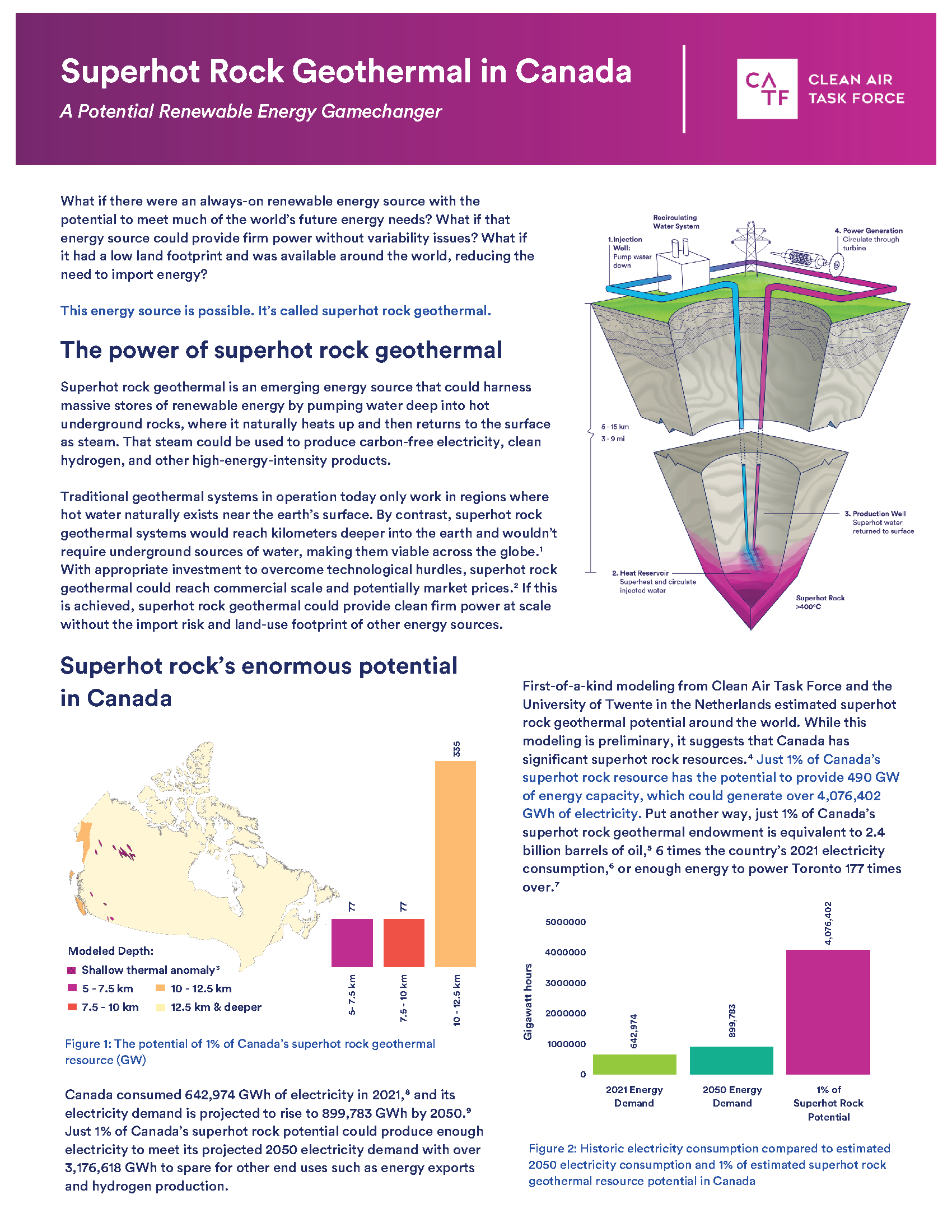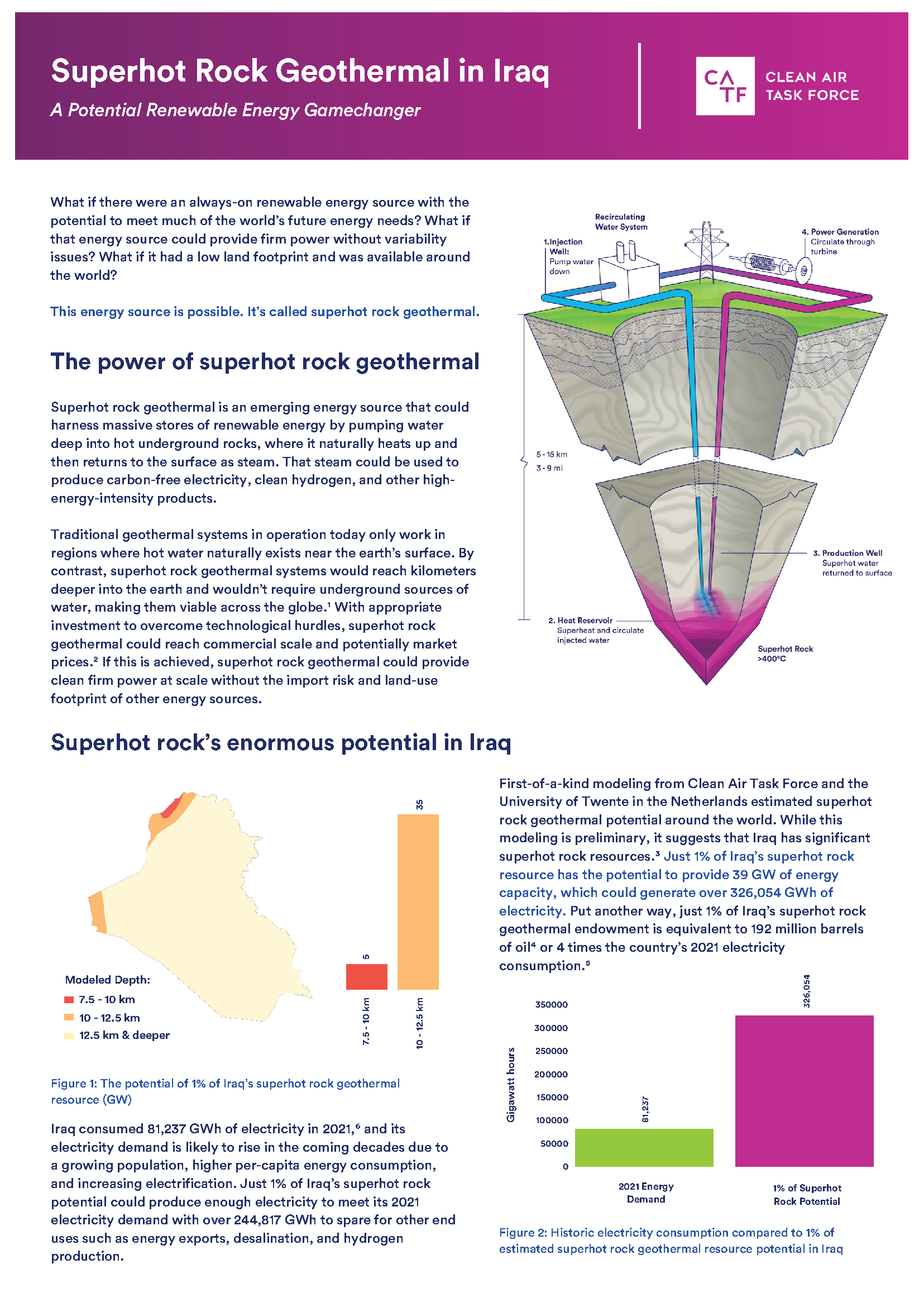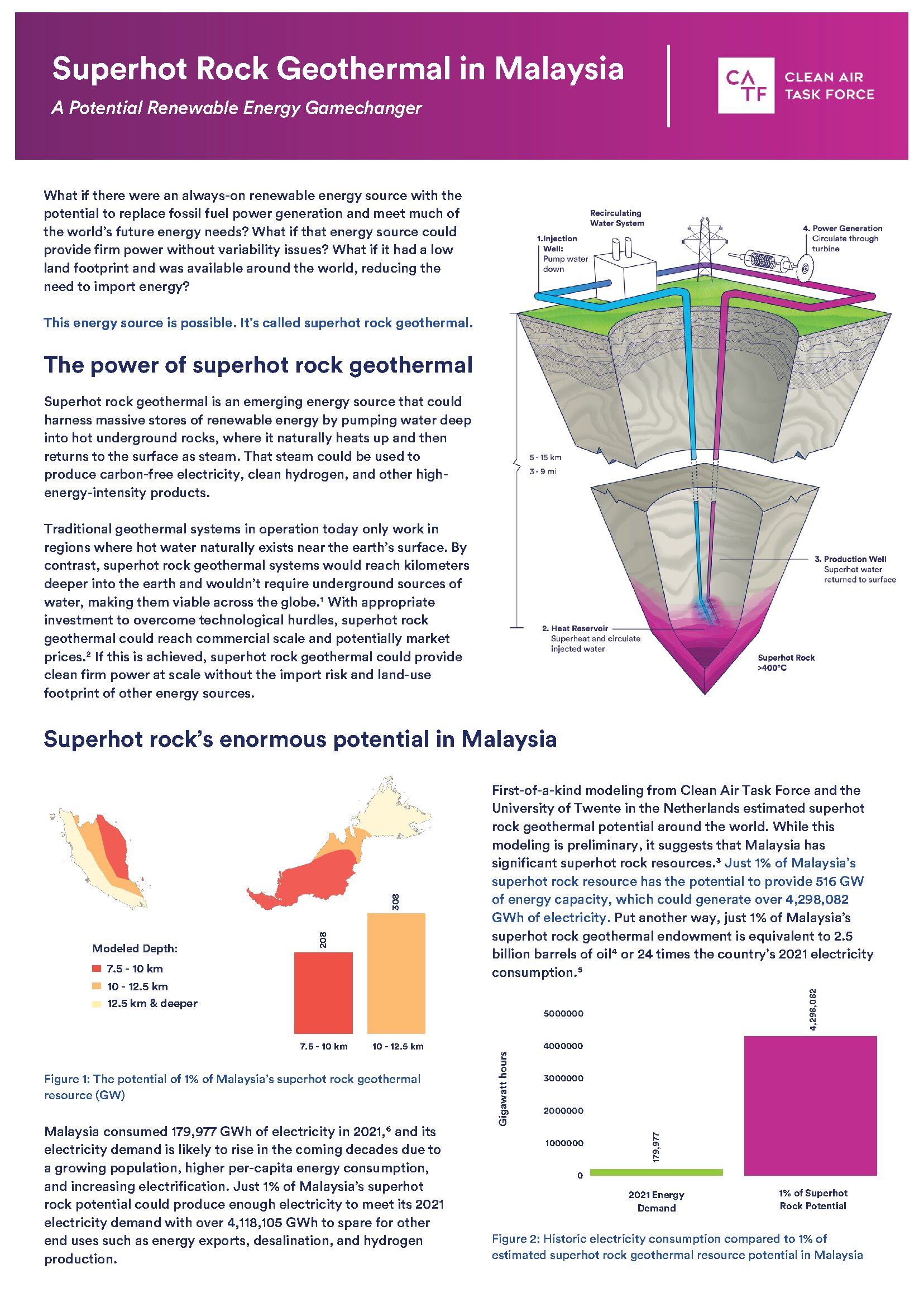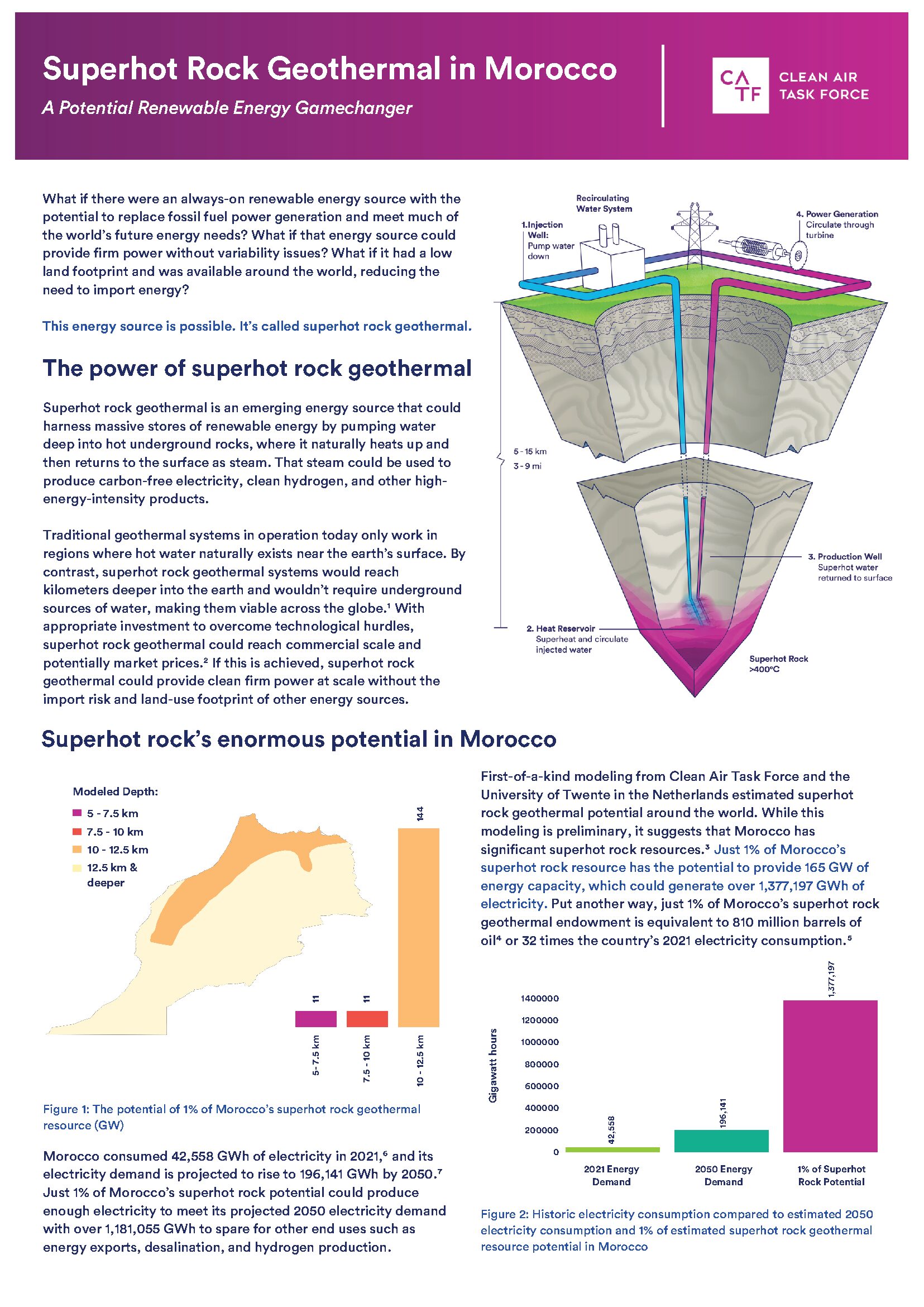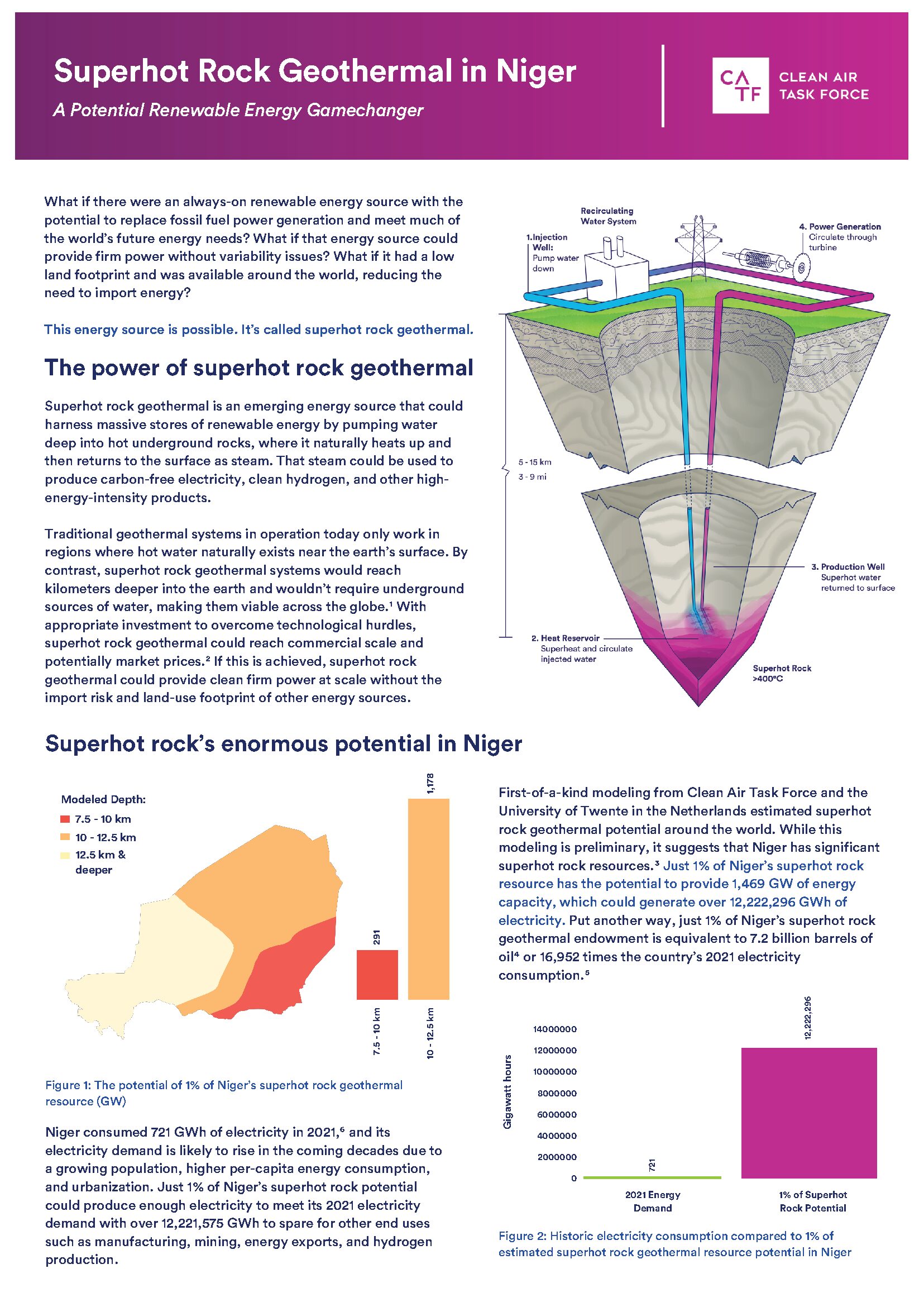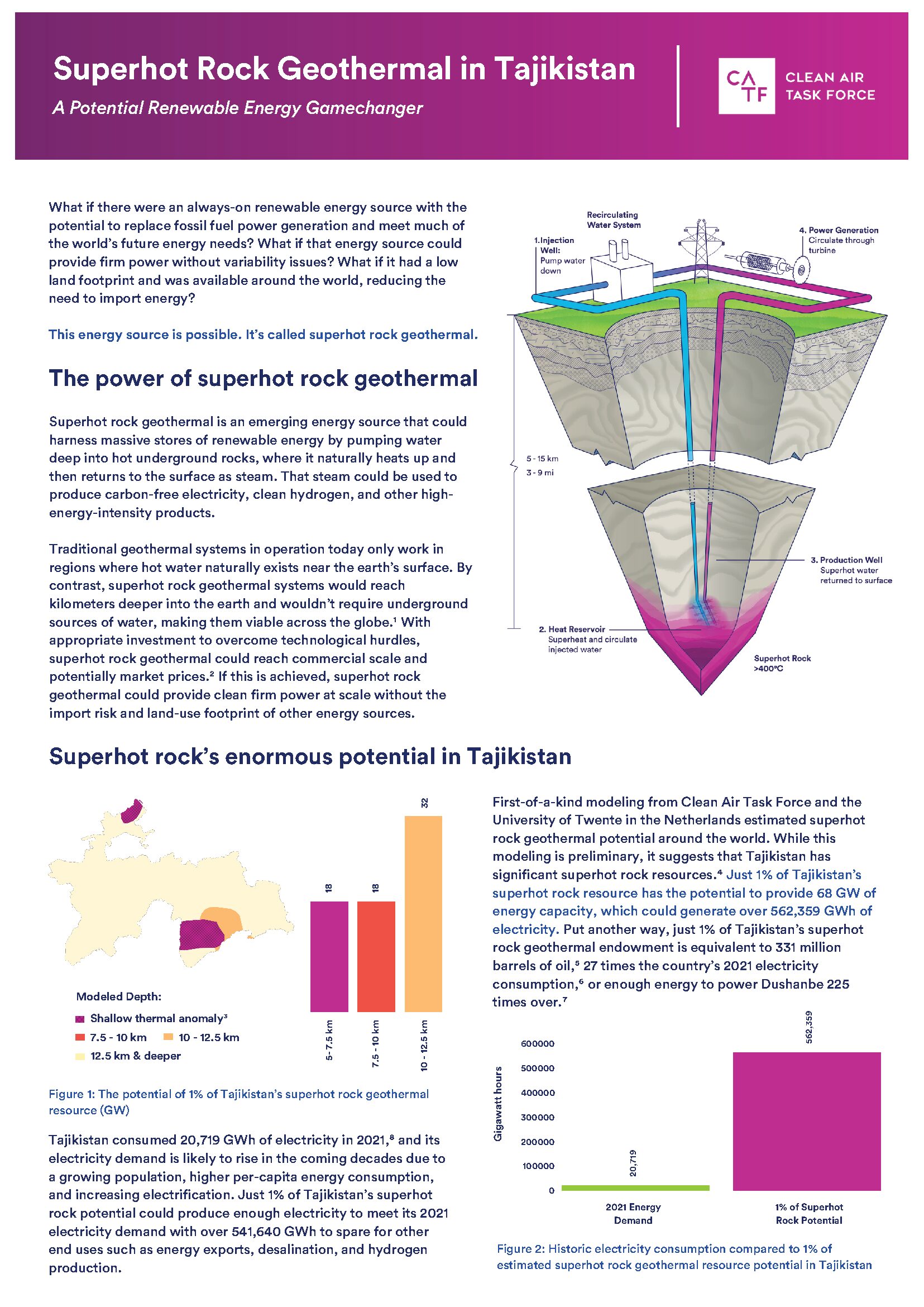the Heat Beneath our Feet
Mapping the potential of superhot rock geothermal
Explore a new, first-of-its-kind modeling tool that highlights the vast energy potential of an emerging geothermal energy source: superhot rock geothermal.
Where can superhot rock be developed?
This preliminary modeling explores the case for commercializing superhot rock geothermal
by estimating the technology’s energy potential around the world.
Click here to view a full screen version of this map.
Developed by Clean Air Task Force in collaboration with the University of Twente, this global model calculates the steady-state, conductive heat transfer in the lithosphere. Key influencers include prescribed radiogenic heat productions and thermal conductivities, which are defined by tectonic domain and the structure of the Earth’s crust as well as the thickness of the lithospheric mantle.
For more information, please review the methodology report informing this work.
More details
The Heat Endowment Methodology discusses the approach and methodology used to map the location of superhot rock petrothermal opportunities. In the absence of hard data to constrain the depth to heat, geological models of the lithosphere are used to assess the depth to potential superhot resources. Two models are examined Lucazeau, (2019), which is a global surface heat flow model constructed using a generalized similarity method, to predict heat flow on a global on a 0.5° x 0.5° grid. Calculation to the 450°C map is assumed using a linear interpolation methodology for heat prediction at depth. The second model is LithoRef18, which is a publicly accessible and transparent global reference model, which outputs the steady state 450°C conductive isotherm of the crust on a 2°x2° grid (Afonso et al., 2019). Since the modelling does not invert using the surface heatflow, the combined model simplifies the errors and assumes a hydrothermal overprint for a shallow layer .
An enormous opportunity to
unlock vast amounts of clean energy
8x
Just 1% of the world’s superhot rock geothermal potential could generate 63 terawatts of clean firm power – 8x more energy than the rest of the world’s electricity put together.
4.3 TW
Just 1% of superhot rock geothermal potential in the U.S. could produce 4.3 terawatts of clean firm power – enough energy to power New York City 687 times over.
24/7
Superhot rock geothermal is a high-capacity power supply with a small land footprint, available 24/7, almost anywhere on Earth.
Explore the potential of superhot
rock geothermal by region
As an abundant source of clean firm energy, superhot rock geothermal could provide many benefits to the world’s energy system. Its global availability could enable domestic production of power in a wide range of places, reducing energy poverty and increasing economic development and energy security. Its small land footprint would reduce siting concerns, and its 24/7 availability reduces the need for excess transmission buildout. Producing power without toxic air pollutants would benefit community health. And superhot rock geothermal could provide zero-carbon employment opportunities for workers in the oil and gas sector.
With appropriate investment to overcome technological hurdles, superhot rock geothermal could reach commercial scale and potentially market prices – unlocking true energy abundance around the world. To see our estimates of global superhot rock geothermal potential, click here.
Explore the potential of superhot
rock geothermal by U.S. state
Stay in the know
Sign up to receive updates on the latest in superhot rock energy
"*" indicates required fields



























